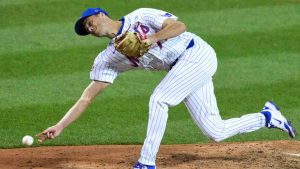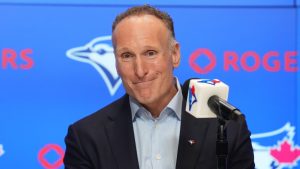Ten years ago, when he was living and training at the Houston Astros’ Dominican academy in Santo Domingo, Teoscar Hernandez was just another teenaged ballplayer trying to hit his way off the island.
He went through it all. The tryout process, signing for a $20,000 bonus, moving away from his family, learning English, fighting to stand out in Dominican Summer League games. He made it to the United States in 2012 to play rookie-ball, made it to MLB four years later as a promising outfield prospect, and now, after a .919 OPS season that earned him down-ballot MVP votes, is finally making it as a big-league star at 28.
Soon, he’ll have his first trophy to show for it — a 2020 Silver Slugger recognizing him as one of the American League’s three best offensive outfielders this season. And the morning after he won that award, Hernandez was recounting his long journey for a group of young players from the Toronto Blue Jays‘ own Dominican academy, all of them trying to make the same climb he did.
“He spoke about the work ethic, the positivity, the competitiveness that he’s seen work for himself and other big-league players,” says Gil Kim, the Blue Jays’ director of player development. “I think for those young players, to be able to speak and interact with someone like Teoscar, who’s obviously a successful big-leaguer and who’s been through what they’ve been through as a Dominican player, was a really unique opportunity.”
That group from the club’s Dominican academy was one of several Blue Jays prospect contingents that have passed through Toronto’s new player development complex in Dunedin, Fla. over the last several weeks to participate in a series of specialized training camps as part of the largest off-season developmental undertaking in the organization’s history.
Blue Jays staff have staged six separate camps on top of three that are ongoing throughout the winter, bringing nearly 100 players to Dunedin since early October. After a year in which minor-league baseball wasn’t played and most prospects spent their summers hitting off tees in garages and throwing backyard bullpens, there’s plenty of missed training time to make up for.
[snippet id=4722869]
But the camps aren’t only a response to the lost season. The organization has been laying groundwork for years to shift its off-season focus from one large camp run by a group of general coaches to a series of smaller, more specialized camps designed by instructors with specific expertise — 2020’s unique circumstances merely accelerated those efforts.
“Every staff member and every player was just so thirsty to get back together and to work with each other to get better,” Kim says. “A lot of times you approach the end of August and September and, for all of the reasons you’d expect, people are exhausted — they’re physically and mentally drained. But this year was the opposite. It felt like it was January or February and everybody was raring to go.”
The camps started in October with what the Blue Jays and other organizations called the fall development league — a modified version of a traditional instructional league for lower level minor-leaguers. Coordinators Casey Candaele, Donnie Murphy and Corey Popham — plus more than 20 staff members from across the organization’s high performance and player development departments — oversaw a group of 30 players including recent 40-man roster additions Gabriel Moreno and Otto Lopez, plus Dany Jimenez, who’s now on Oakland’s roster after being selected in the Rule 5 Draft.
A focus of the camp was to expose players to as many game-like environments as possible. To that end, the Blue Jays played eight games against other teams running similar camps in the area, and supplemented that with intrasquad games and live batting practice sessions. High-velocity pitching machines were used to make regular batting practice more competitive, while routine fielding drills were turned into mini competitions between players.
“They created an environment where guys were competing, guys were pushing each other, and guys were getting better,” Kim says. “That’s been an area that we’ve really focused on — establishing those competitive environments throughout all of these camps to where guys are getting used to being challenged. Challenged in practice; challenged in games. And guys are getting used to finding ways to compete and win those challenges.”
[snippet id=3305549]
Brent Lavallee, who would’ve been the 2020 Vancouver Canadians manager, led a rookie camp for newly drafted players like CJ Van Eyk and Trent Palmer, plus recent international signees such as Rikelvin de Castro and Estiven Machado. The camp served as an introduction to the organization’s developmental approach, in which players devise their own individualized training routines and create plans for specific skills they want to improve over the ensuing 12 months.
Meanwhile, Blue Jays bullpen coach Matt Buschmann and coordinator Matt Tracy ran an intensive pitching camp for a small group of the organization’s best arms, including Simeon Wood Richardson and Alek Manoah. Coordinator Hunter Mense did the same for top hitters, including Jordan Groshans and Austin Martin.
During a normal year, the Blue Jays would invite that group of close-to-MLB-ready prospects to Toronto for a January development camp at Rogers Centre, running a program intended to expose players to what major-league life will be like.
But pandemic border restrictions won’t allow for that this winter, which is why a portion of the pitching camp was spent showing players how the Blue Jays utilize data and information to game plan and strategize, covering scouting reports, pre-start routines and in-game decision making. Same goes for the hitting camp which put its nine players through workshops covering how to study opposition pitchers, ways to utilize video, and what to expect when transitioning from minor-league to major-league pitching.
There were also separate camps for the club’s crop of young Dominican and Venezuelan players. There was a rehab camp for players recovering from long-term injuries. And there was a physical development camp in addition to an on-going camp for major-leaguers who have chosen to spend their off-seasons working out in Dunedin.
That MLB group includes Hernandez, Rowdy Tellez, Danny Jansen, Ryan Borucki, Bo Bichette, Nate Pearson, and Jordan Romano. Vladimir Guerrero Jr.’s been involved as well, spending time in Dunedin prior to leaving for the Dominican Republic where he’s now playing winter ball.
This level of activity was part of the vision when the Blue Jays spent nearly $100 million renovating their player development complex to make it what club president Mark Shapiro considers “the all-around best facility in Major League Baseball.”
Something special is on-deck in Dunedin.
Take a at our new Player Development Complex! pic.twitter.com/5t1hlrAk5U
— Toronto Blue Jays (@BlueJays) February 19, 2020
The goal is to have young athletes training there year-round in what amounts to a player development factory. Pitchers throwing bullpens tracked by Rapsodo devices and high-speed cameras. Hitters in video suites studying swings. Minor-leaguers rubbing shoulders with major-leaguers in the 10,000 square foot weight room, learning from the experiences of athletes who were once in their shoes and made it to the sport’s highest level.
“It’s the great thing about having that complex. The overall square footage, the layout — there’s just so many resources there for us to improve and get better,” says GM Ross Atkins. “It’s remarkable. It’s a great opportunity.”
Of course, due to necessary pandemic protocols, the facility hasn’t been quite as busy as the Blue Jays would like it to ultimately be. Groups have been staggered as much as possible, working out at different times of day and making use of outdoor space. Everyone’s being tested for COVID-19, wearing masks, distancing. These days, learning how to successfully train while staying safe and healthy is a developmental priority in and of itself.
“We’ve tried as much as possible to recreate the safety measures and protocols that we had during the big-league season,” Kim says. “We strive for the safest environment possible. But there will be obstacles and there will be bumps along the way. And our staff did a really nice job of adjusting to each one of those bumps that came up. Thankfully, the protocols were all effective.”
The team’s high performance department has been paying a lot of attention to the measurables of players throughout the camps, trying to help project them for 2021 after a lack of on-field workload in 2020. How players perform in physical assessments and how they recover from off-season training could play a part in where they end up starting the 2021 season.
Could a first-round talent like Groshans, who’s played only 23 games above rookie-ball, fast forward to double- or triple-A? Could Simeon Woods Richardson jump ahead with him, despite having only a half-dozen high-A appearances to his name?

It’s possible. Groshans and Woods Richardson spent their summers testing themselves against major-league competition at Toronto’s alternate training site in Rochester, NY. Alejandro Kirk, who finished 2019 at high-A, was so impressive in that same environment that he earned a major-league call-up. This strange 2020 season let players show there are ways to prove you’re ready for a greater challenge without actually playing games. And the Blue Jays may have learned something about the potential benefits of pushing prospects faster than they have in the past.
“We’re staying open-minded to different ideas for 2021,” Kim says. “Given the lack of a 2020 season, we may change certain approaches.”
In general, it’s a good bet that rapid major-league ascents like the one Kirk made will become more common industry-wide going forward, particularly with MLB eliminating short-season ball and culling its affiliated system to four teams per organization. Now, rather than sending recently drafted and signed players to rookie-level clubs across the continent, teams will instead host those players at their complexes in Florida, Arizona and the Dominican Republic, running what more closely resembles an academy system.
That’s one of the reasons why the Blue Jays feel their state-of-the-art facility is such a competitive advantage — going forward, teams will be increasingly relying on their complexes to house and support high-level development.
For a player like Martin, who spent the last three years playing at Vanderbilt University where ballplayers have access to 30,000 square-feet of modern training and rehab facilities, that means the transition to professional baseball will occur in an environment similar to what he’s accustomed to. Recent draftees will no longer go to tiny towns like Bluefield, VA., where the now-unaffiliated short-season Blue Jays were playing in a quaint yet substandard and outdated facility originally constructed before the Second World War and last renovated in the 1970’s.
[relatedlinks]
An assignment to the player development complex could also become an in-season option for struggling or under-performing players. Say a minor-league pitcher starts ramping up for the season during spring training but can’t find the velocity he normally has. Maybe he’s carrying a little wear-and-tear from season’s past; maybe he over-trained during the winter.
Rather than have that pitcher go off to an affiliate and try to grind through a season not feeling his best, he could be held back to work through a purposeful conditioning and throwing program designed to rebuild the arm strength needed to pitch at the velocities that allow him to be most successful. Then, when he joins an affiliate mid-season, he’ll be much better positioned to get strong results and advance his career.
You could apply similar thinking to a position player who’s struggling at the plate a month or two into the minor-league season. Maybe he’s playing through a couple minor injuries; maybe the daily demands of competition are wearing him down mentally.
Instead of letting stress compound with game after game of poor results, why not give the player a breather with a two-week assignment to the player development complex where he could catch his breath and properly address the issues plaguing him at the plate, before re-entering that competitive environment with a cleared head and renewed purpose? Maybe he’d have a better chance to salvage his season.
That’s the upshot of Toronto’s investment in Dunedin, which has unlocked a host of possibilities for the club as it seeks to better develop MLB talent. Ultimately, the goal is to make development smoother and more efficient for players than it was for a teenaged Hernandez a decade ago. Even hosting a camp for the Dominican players Hernandez was talking to the morning after he won his Silver Slugger wasn’t something the club ever considered before upgrading its facilities. Now, it’s possible. And Hernandez himself shows those young players what’s possible, too.
“That’s something that I know we’re all appreciative of — that we have players on our big league roster who are open and willing to share insights and experiences that have helped them get to where they are,” Kim says. “That’s definitely been an advantage. To have that and the new complex up and running, it’s created a cool environment that just gets us really excited for the future.”
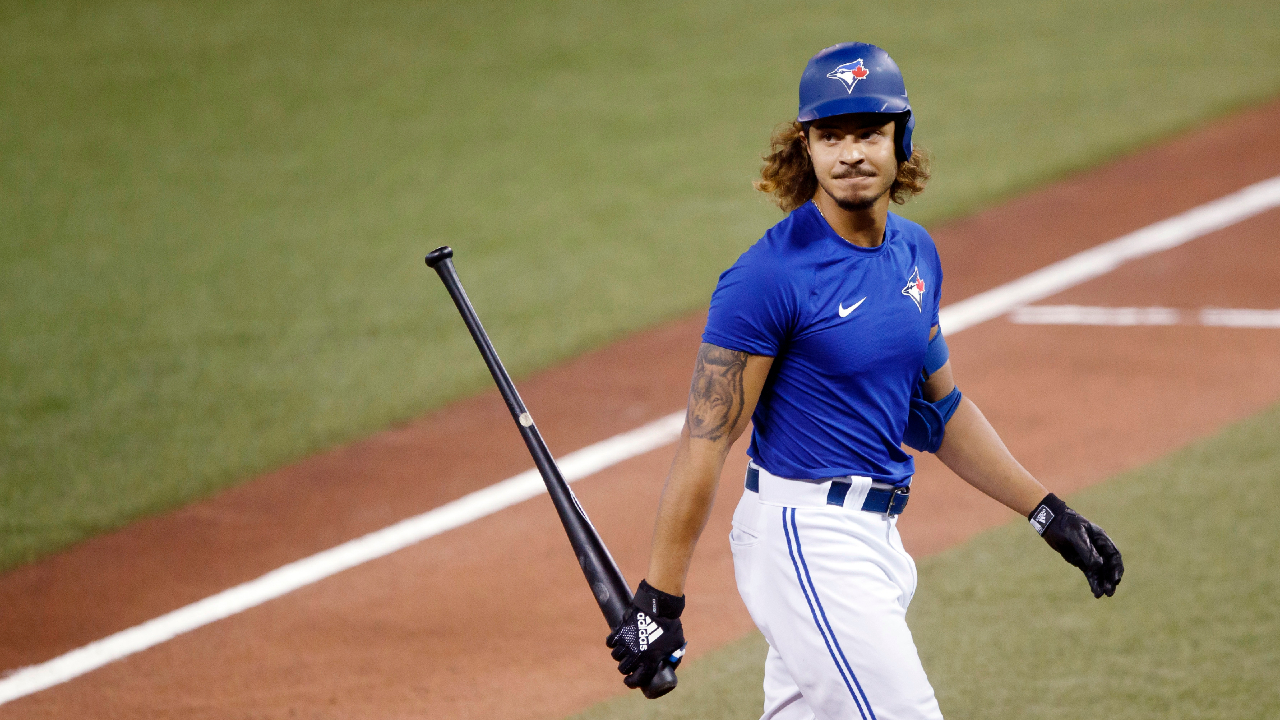
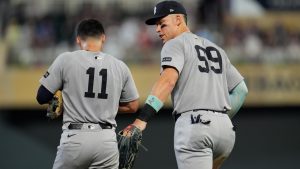
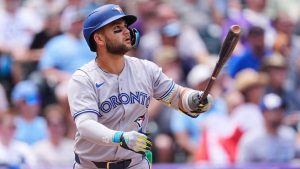 4:29
4:29